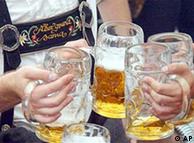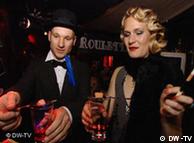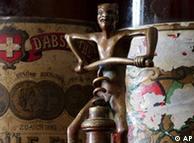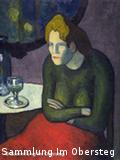bitters
It’s not easy, because I am thrilled with bitters. They are beers for drinking, for enjoying several pints over the course of an evening, rather than for carefully paced sipping. They are not meant to impress connoisseurs with their power or creative flavoring. They are meant, as so many British pub-goers understand, to quench thirst pleasurably without getting in the way of conversation.2 ((~s))苦味酒:カクテルの香味・強壮剤用.bitters Show phonetics
noun [U]
a strong bitter alcoholic drink made from spices and plant products that is mixed with other alcoholic drinks
A Tour of Bitters for the Summer
YOU have to hand it to the British for their engaging skill at understatement. How else to explain their predilection for taking something refreshing and delicious and saddling it with a name like “ordinary”?
Ordinary is the term for the basic British bitter, the ale that has for generations quenched bottomless thirsts in pubs throughout England. Possibly even the British realized that a name like ordinary might cause a few patrons to lay their heads on the bar far too early in the evening, out of sheer boredom. So in their fashion, they ratcheted up the excitement.
A slightly stronger ale was called best bitter or special bitter, a heartier brew was dubbed extra special bitter, or E.S.B.
Can you contain yourself?
It’s not easy, because I am thrilled with bitters. They are beers for drinking, for enjoying several pints over the course of an evening, rather than for carefully paced sipping. They are not meant to impress connoisseurs with their power or creative flavoring. They are meant, as so many British pub-goers understand, to quench thirst pleasurably without getting in the way of conversation.
These days, more extravagant beers get most of the attention, like India Pale Ales, double I.P.A.s and other stronger brews with more flamboyant flavors. But bitters and their restrained brethren are the daily bread of beer drinking.
With warm weather coming, though, bitters are worth looking for to be enjoyed over the long haul of a ballgame or a summer barbecue.
With this in mind, we called the tasting panel to order to sample 25 beers made in the bitters style. Florence Fabricant and I were joined by two guests: Richard Scholz, an owner of Bierkraft in Park Slope, Brooklyn, and Alex Hall, a cask ale consultant and proprietor of gotham-imbiber.com, an excellent New York beer resource.
One of our first issues was to decide what exactly constituted the bitters style. It’s a broad range of beers, characterized by mildness and by a balance between the sweetness that comes from malt and the bitterness that comes from hops. Mild carbonation, grassy, mineral flavors, tangy fruitness and occasional spicy and nutlike flavors — in restrained amounts, mind you — are all part of the bitters identity.
Some beer authorities, like Garrett Oliver, the brewmaster at Brooklyn Brewery and the author of “The Brewmaster’s Table” (Ecco, 2003), feel that authentic bitters can only be experienced when served unpasteurized, unfiltered and naturally carbonated.
These cask-conditioned ales are found at the best British pubs, and increasingly at serious American beer bars. But those ales don’t come to you. You must go to the ale.
Technically, Mr. Oliver says, once breweries bottle bitters, it becomes English pale ale, with more forceful carbonation than the soft, gentle bubbles in the cask-conditioned ales. Still, he allowed, the definitions are fluid.
Alex, who has played as large a role as anybody in bringing cask ales to New York City, is not troubled by the differences between cask and bottle. “It’s the ingredients in the ale, not the method of dispensing,” he said.
With that in mind, we chose widely across the bitters style. In color, the beers varied from tan to amber to brown with glints of red. They were indeed mild in alcohol, ranging from 3.6 percent to 5.9 percent. Of the 25 ales, 17 were from England, 7 from the United States and 1 from Australia.
The biggest surprise to me was how closely most of them stuck to the genre, without adding something extra. It wasn’t always difficult to pick out the American brews — they tended to have the citrus aroma of American hops — but their use fit the restrained requirements of the style.
Still, our No. 1 bitter was an American brew, the beautifully mellow Sawtooth Ale from Left Hand, which I felt was a dead ringer for a British bitter right down to the gentle carbonation.
Our No. 2 was a British brew, the lively yet restrained Coniston Old Man Ale. The Old Man Ale was perhaps more brown than is typical of bitters, but it fit the genre in terms of restraint. Coniston also makes a more straightforward example, Bluebird Bitter, which we could not find.
No. 3 was a British standby, Fuller’s London Pride, a textbook example of a gentle bitter, or English pale ale. Whatever the term, it was delicious, as was its sibling, Fuller’s ESB, richer and maltier, but still balanced and refreshing.
As with many milder beers, bitters can be somewhat fragile. It’s imperative to keep them refrigerated and away from light. Four or five bottles in our selection — including a couple of American ales — showed at least some degree of diminished quality, most likely because of transportation or storage issues.
Seven of the top 10 were British. Aside from the Sawtooth Ale, one other American brew made the list, Brooklyn Brewery’s eminently chuggable Pennant Ale. The one entry from Australia, Barons ESB, also made the list at No. 10. It was brisk and malty, and it shared a mineral, almost saline quality with several of the British brews.
Honestly, it’s difficult to continue to describe these beers. One can only use words like gentle, restrained, balanced, mild and harmonious so often. The beauty of these beers is truly in the drinking.
“It’s one of my favorite styles of beer,” said Richard, who can pick anything he wants off of the shelf at his store, Bierkraft. “With all the beers that are super-hopped or over-the-top, these are just drinkable.”
Tasting Report: Gentle and Engaging for Summer Sipping
Left Hand Sawtooth Ale
$1.80 for 12 ounces
*** 1/2
Longmont, Colo.
Mellow, balanced and engaging with a pure malt character, soft carbonation and subtle hop aromas.
Coniston Old Man Ale
$6.95 for 25 ounces
***
England
Earthy, spicy and refreshing with lively but restrained malt and hop aromas. (Importer: Shelton Brothers, Belchertown, Mass.)
Fuller's London Pride
$3.95 for 25 ounces
***
England
Gentle and pleasing with well balanced aromas of sweet malt and bitter hops. (Distinguished Brands International, Littleton, Colo.)
Black Sheep Ale
$4.75 for 25 ounces
***
England
Softly carbonated, elegant and attractively bitter, with a malt and mineral flavor. (Eurobrew, Santa Monica, Calif.)
Wychwood Fiddler's Elbow
$5.95 for 25 ounces
***
England
Subtle and pleasing with restrained earth, spice and hop aromas. (Eurobrew)
Fuller's ESB
$3.95 for 25 ounces
***
England
On the malty side with sweet aromas; brisk and refreshing. (Distinguished Brands International)
Morland Old Speckled Hen
$2 for 12 ounces
** 1/2
England
Spicy with pronounced hop aromas and grainy malt flavors. (Total Beverage Solution, Mount Pleasant, S.C.)
Greene King Abbot Ale
$2 for 14.9 ounces
** 1/2
England
Sweet malt aroma, restrained and gentle. (Total Beverage Solution)
Brooklyn Pennant Ale
$2 for 12 ounces
** 1/2
New York
Gentle, balanced and refreshing with restrained malt and hop aromas.
Barons ESB
$2 for 12 ounces
** 1/2
Australia
Prominent malty aromas; grassy, saline flavors. (United States Beverage, Stamford, Conn.)










